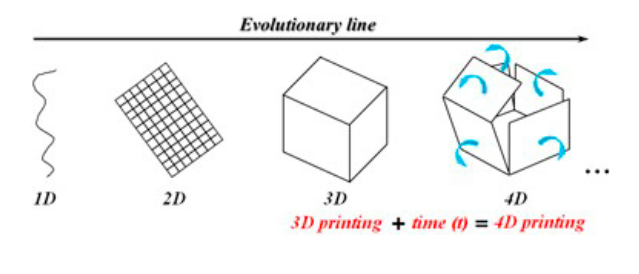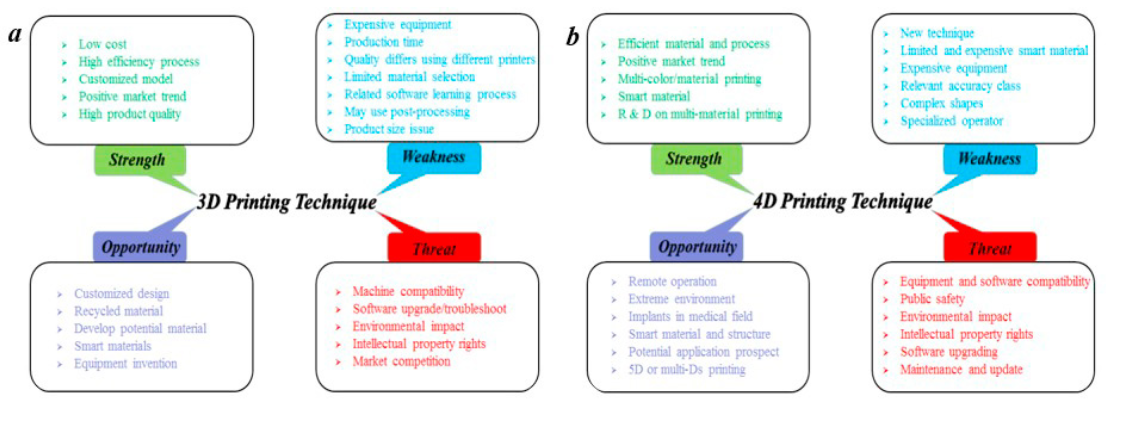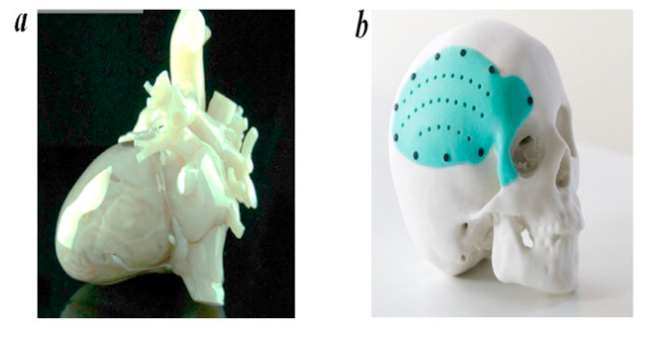
研究人员聚集在一起回顾3D和4D打印,并探索其在“最新3D和4D智能打印技术:比较回顾和未来前景”中的持续潜力。
Researchers come together to review both 3D and 4D printing, as well as exploring its ongoing potential in ‘Recent 3D and 4D intelligent printing technologies: a comparative review and future perspective.’
虽然这两种技术都为工业用户提供了制造和维护功能零件和原型的绝好机会,但3D和4D打印却是世界各地着迷的源头,因为它们具有随意创新的能力,可以削减中间商并用新的东西制造新物体的能力。以前可能无法实现的材料。
While both technologies offer great opportunity for industrial users to make and maintain functional parts and prototypes, 3D and 4D printing are a source of fascination around the world due to the ability to innovate at will, cutting out the middleman, and making new objects with new materials that may not have been possible previously.

相关3D打印方法的简要概述
The brief overview of relevant 3D printing methods
在4D领域中,我们看到了一些材料的进步,这些材料可能不太灵活,无法适应环境的变化,并且可以根据用户的需求进行调整。作者不仅深入研究了基础知识和发展(尤其是从3D到4D的演进),还对两种数字制造形式进行了比较分析。
In the 4D realm, we see the progress being made from materials that may be less flexible to those that are able to shift with their environment—and according to the user’s needs. The authors not only delve further into fundamentals and development (especially in the evolution from 3D to 4D) but also perform comparative analysis regarding both forms of digital fabrication.
从80年代开始通过Chuck Hull进行3D打印到它在主流中的出现,以及现在已经集成到许多领域(从机器人技术到组织工程,电子学等等),作者们都在关注3D打印,正确地指出了目前的3D打印技术。设计师和工程师可以利用各种好处,包括时装和珠宝等应用。
From the inception of 3D printing in the 80’s via Chuck Hull to its emergence in the mainstream and now integration into many fields—from robotics to tissue engineering, electronics, and more—the authors follow 3D printing, pointing out correctly that it is currently ‘still in the active stage of industrial innovation.’ Designers and engineers are able to take advantage of a wide variety of benefits—even including applications like fashion and jewelry.

1D,2D,3D和4D概念的示意图
Schematic illustration of 1D, 2D, 3D, and 4D concepts

具有固体,液体和基于功率的图案的3D打印技术的总体示意图(a)FDM; (b)SLS; (c)SLA
General schematic overview of 3D printing technology with solid, liquid and power-based patterns (a) FDM; (b) SLS; (c) SLA
尽管许多人都在享受诸如价格可承受性,可及性和更高的生产效率等优势,但是在诸如软机器人和航空航天等应用中,材料仍然存在挑战。 4D打印智能材料具有在温度或湿气压力下变形的能力,从而为用户提供了更大的灵活性和多功能性。
While advantages such as affordability, accessibility, and greater efficiency in production are being enjoyed by many, there are still challenges regarding materials in applications like soft robotics and aerospace. With the ability to shift form while under pressure from temperature or moisture, 4D printed smart materials avail the user of greater flexibility and versatility.
与3D打印相比,4D打印更新了打印配置随时间变化的概念,这依赖于环境刺激。因此,应该使用随时间变化的产品变形对4D打印结构进行完全预编程。
“Compared to 3D printing, 4D printing updates the concept of change in the printed configuration over time, which relies on environmental stimuli. Therefore, 4D printed structures should be fully preprogrammed using time-dependent deformations of products,” state the authors.
4D打印依赖于:
合适的硬件
刺激反应物质
刺激物
互动机制
数学建模

SWOT分析a)。 3D打印技术; b)。 4D打印技术。
SWOT analysis of a). 3D printing technology; b). 4D printing technology.
智能材料以及能够变形然后恢复其自然形状的能力意味着4D打印不仅适用于机器人技术,而且还适用于水凝胶,管道和其他可能与可重复使用性和回收利用相关的材料的自修复。
Smart materials and the ability to deform and then return to their natural shape mean that 4D printing is suitable for not only for robotics but also self-repairing of materials like hydrogels, piping, and other materials which may be related to reusability and recycling.

使用吸水材料通过自折叠进行变形的图示:(a)1D至3D41; (b)2D至3D41
The illustration of shapeshifting by self-folding using water absorption materials: (a) 1D to 3D41; (b) 2D to 3D41
尽管3D打印的一大障碍是仅用一种材料制造物品的普遍需求,但4D打印已开始在医学和工程领域等应用中成为先行者。
While one of the obstacles in 3D printing is the general need to fabricate items with only one material, 4D printing is beginning to emerge as a forerunner in applications like the medical and engineering fields.

医疗领域的3D打印模型(a)3D打印心脏; (b)3D打印头骨
3D printed models in the medical area (a) 3D printed heart; (b) 3D printed skull
但是,3D打印仍在军事领域中变得越来越流行,可以制造武器并可以更好地维护零件。 3D打印模型正在改善对患者的治疗,可以用作非常有用的手术预计划设备。还创建了各种硬件来挤出食物,例如巧克力和煎饼面糊。
3D printing is still becoming increasingly popular, however, for use in the military field, creating weaponry and allowing for better maintenance of parts. 3D printed models are improving treatment for patients and can be used as extremely helpful pre-planning devices for surgery. Various hardware has also been created for extrusion of food like chocolate and pancake batter.
对于4D打印,作者希望将其用于创建更高级的智能材料,这些材料可以根据用户的要求进行环境转换,提供“可自我控制的功能”,延长产品的使用寿命并提高结构的复杂性。
As for 4D printing, the authors expect that it will be used to create more advanced smart materials that can transform environmentally as users require, offer ‘self-controllable functions,’ expand longevity in products, and promote greater complexity in structures.